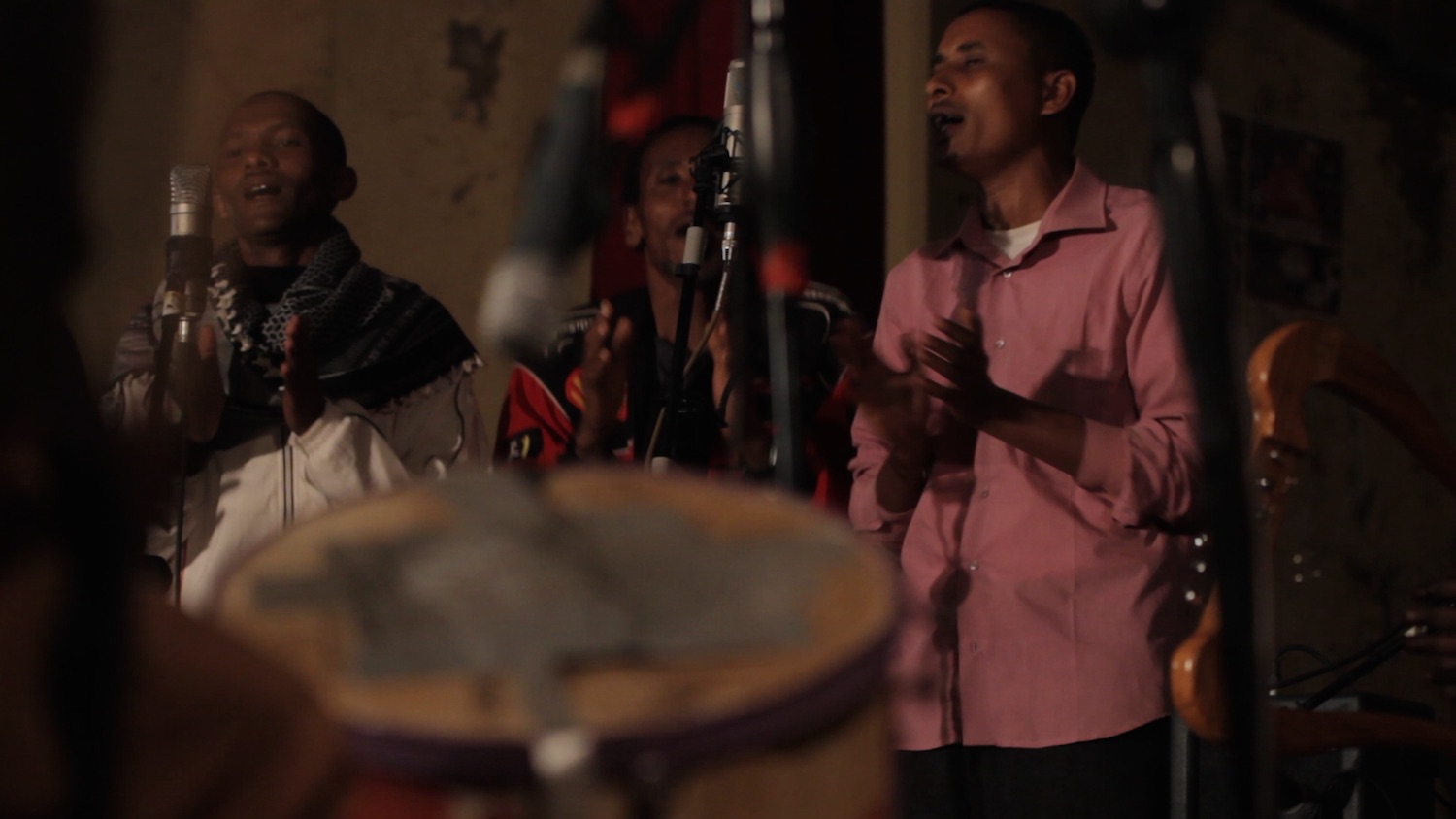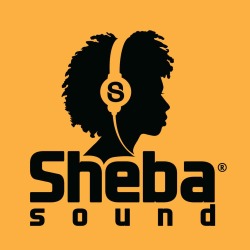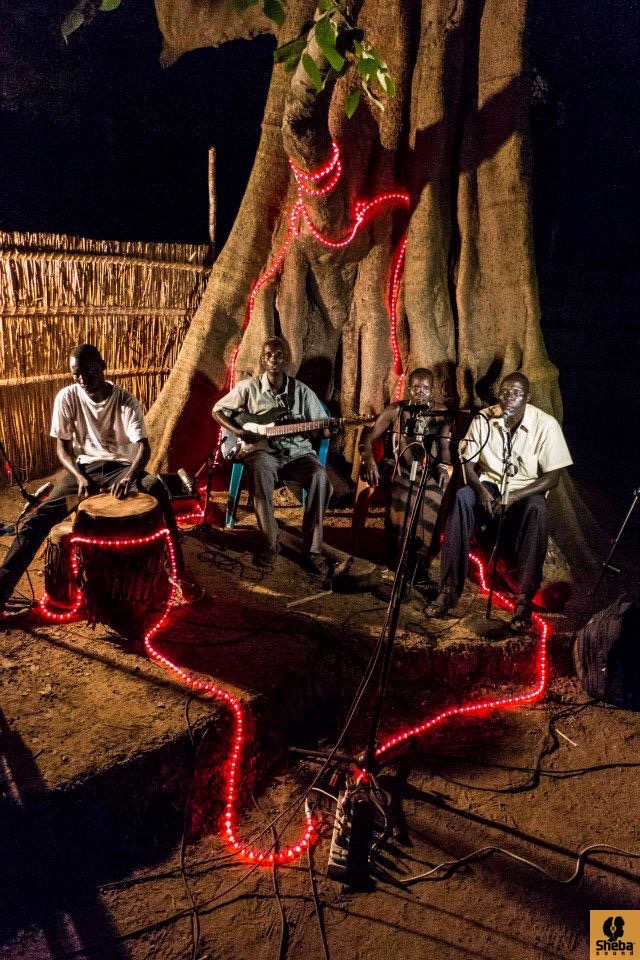Our beginnings
Why record Ethiopian music outside Addis Ababa?
The recording process
What’s next?
Lastly, an important note
Our beginnings
Sheba Sound is the ongoing product of over six years of events, music digging and recordings, originating in Addis Ababa and spanning as many of the areas of the country as is physically possible to reach.
Music drew us to this beautiful, historic country.
Most of the old music is littered across cassettes, reels and vinyl in dusty corners. For new music, contemporary musicians outside Addis Ababa have little opportunity to record and proudly express their unique mesmerising sounds.
We at Sheba Sound are trying to redress this balance. We are committed to recording and introducing diverse music to Ethiopians themselves as well as to foreign communities.
We have our work cut out; there are over 85 separately recognised tribes, all of whom define themselves through their unique language, music, customs, values and clothing.
We bring traditional deep Ethiopian sounds, with a modern twist, to dancefloors and bars all over the world.
For more information about our activities, retrace our steps on the map or delve into our recordings archive. Follow us on soundcloud and twitter, give us a shout on facebook, check out our youtube channel and drop us a line at sheba@shebasound.com.
Below we explain a bit about our philosophy: why we are travelling around Ethiopia making these recordings; what process we go through in each case; and what we plan to do next.
Why record Ethiopian music outside Addis Ababa?
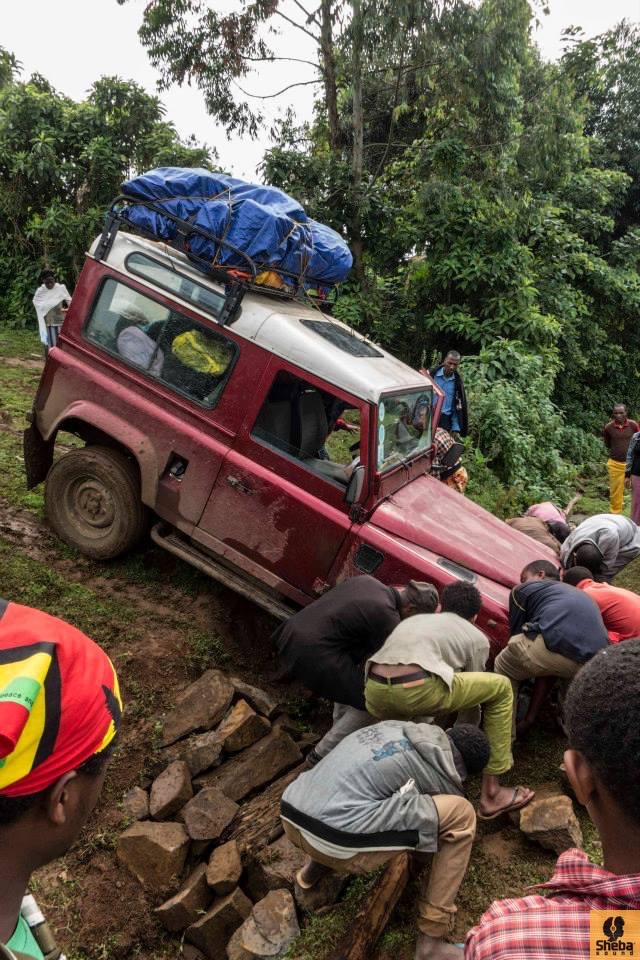 For many months we have been travelling around Ethiopia in a Land Rover, armed with high-end microphones, an amazing sound technician (Sir Quino Pinero) and great cameramen (Israel Seone, Gonzalo Guarjardo and Jonathan le Pechon).
For many months we have been travelling around Ethiopia in a Land Rover, armed with high-end microphones, an amazing sound technician (Sir Quino Pinero) and great cameramen (Israel Seone, Gonzalo Guarjardo and Jonathan le Pechon).
The idea for this project – which has come to be known as “Out of Addis” – grew from a sense of frustration with listening to contemporary music whilst living in Addis Ababa. All of us were originally drawn to Addis by the old 70s Ethio-funk music that we had heard presented by Francis Falceto through his Ethiopiques collection. What we generally hear in Addis nowadays are bands playing Ethio-jazz re-interpretations of old music we have already come to love, or “pop” pumped out the bars and radio, in which the keyboard producer has come to rule.
The typical producer in Addis appears to be stuck in an 80s time-warp of sound. Different distinctive tribal beats, such as Amhara, Tigray or Gurage, can be easily induced with the flick of a button on the synthesizer. There is very little money to encourage session musicians to attend recording sessions, with the result that the synthesizer becomes a substitute for all those crazy horn lines we know from the 70s. Certainly, the singers and melodies in modern Ethiopian pop can be killer; but the lack of investment and creativity in arrangement and production means that Ethiopian music is considered by some to have enjoyed its “Golden Age” many decades ago.
The music commonly heard in Addis Ababa tends to be a representation of whichever tribes are in power in the country at the time. In the 60s and early 70s, Haile Selassie, hailing from the Amhara tribe, was in charge. The vast majority of music heard in bars and on the radio in Addis is either from the Amhara or Tigray tribe. Nonetheless, having heard lots of acoustic music on tapes from the 80s and 90s, it was clear to us that many musicians all over the country have recorded mesmerising music.
Initially we attempted to capture Ethiopia’s contemporary sounds by organising pretty expensive recording sessions in Addis. The idea behind this was to engage the singer of current pop tunes that we loved to re-record synthesizer-produced songs with a full band of live musicians. We picked a bunch of session musicians from Addis to lay down the song and exchanged the synthesized drums and melody lines with live traditional drums and sometimes a horn section. The results were amazing. When we’re rich, we’d love to carry on paying people to record in Addis. Sadly the approach just wasn’t financially sustainable at that time.
One major problem with the sessions was that we were choosing musicians in Addis to work on songs that might come from tribes other than theirs. Ethiopia has never been colonised, and the vast majority of the population are still living on the same land, in the same lifestyle that they maintained for thousands of years. The music across different tribes is very diverse and you will only find its true, organic sound if you leave Addis and locate it in its place of origin.
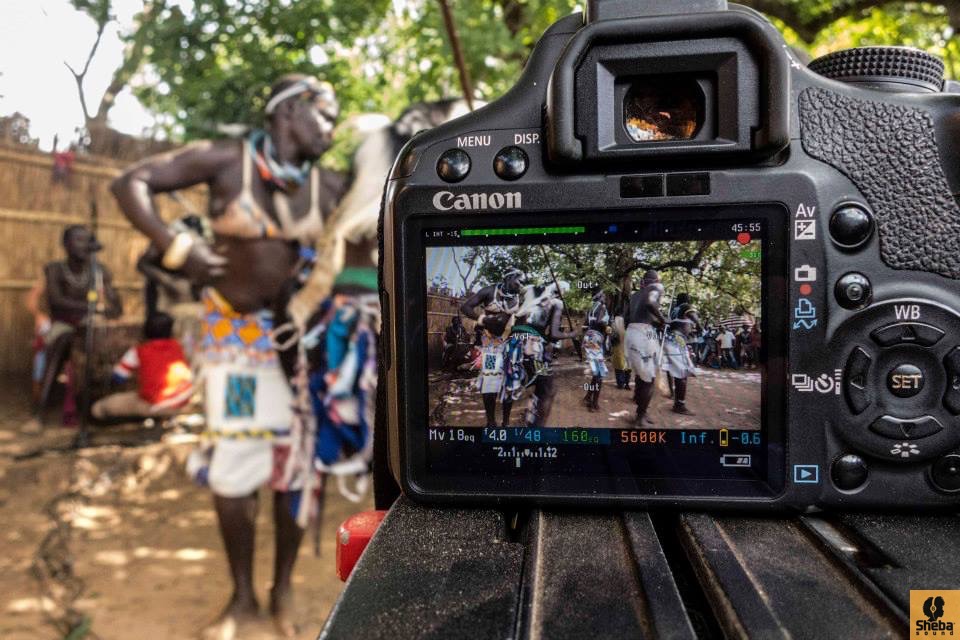 When we started to make enquiries about the different musicians and tribes that we could link with there was a surprising lack of information available. Despite the fact that among our recording group we thought we had links to most of the people involved in the music industry in Addis, all we could find was the odd phone number and some tips as to where we might look outside there.
When we started to make enquiries about the different musicians and tribes that we could link with there was a surprising lack of information available. Despite the fact that among our recording group we thought we had links to most of the people involved in the music industry in Addis, all we could find was the odd phone number and some tips as to where we might look outside there.
The Ethiopian Government maintains central administrative offices for each of the 85 or so “tribes” registered in Ethiopia. There is always a representative from the Ministry of Culture and Tourism present in the area. They are literally there to promote culture and tourism, and maintain links with local musicians who can represent their tribe at government events.
Some of these groups meet every day in state theatres or buildings to play together. Some places even have sound systems and instruments provided by the government. Others merely come together every now and then to represent their tribe at national government events.
Often we had no information about the musicians in the area we were travelling to. We were expected to present ourselves to any authorities before recording, and the “Bahal Aderash” network of state offices actually proved to be a remarkably useful means of contacting local musicians when we got to a new place. It allowed us to assess a situation that otherwise could have taken weeks.
Our first trip took us just 100km out of Addis, and was essentially a trial run to see if we would find very different music outside Addis. This first “Out of Addis” recording was in Welkite, the heartland of the infamous Gurage beat, and we immediately experienced acoustic representations of that beat which we had never convincingly heard in Addis. The recordings were a complete success.
This left us with an addictive taste in our mouths. Any time lounging around in Addis suddenly felt like treading water. The real deal was to be found by jumping in a Land Rover with a recording crew and as much cash as we could muster up.
Recording around the countryside in Ethiopia is no easy task. People are super-wary of a bunch of bearded freaks travelling around their country under their own steam with microphones and cameras. The first thing we needed to do each time we left Addis was to secure a press permit from the Ministry of Communication. On these permits we had to specify exactly where we planned to record. This was a pretty crazy notion, given that we had no information. The whole point of the trip was to gather information.
The strange thing was, it didn’t really seem like anyone else was doing anything like this. We had heard a couple of recordings by Vincent Moon, who had been in Ethiopia for just three months and had put out full sessions of the few recordings he had made. Otherwise, the government media channel ETC commissions Ethiopian media companies to do the odd bit of recording. To be honest, the sound and visuals are sometimes not of the highest quality; the whole audio sounds like it is captured with one boom mic and groups are encouraged to stage a tourist-style, stereotypical performance, with the result that many of ETC’s productions come across as quite standardised.
There were also anthropologists (from Germany) who had been around in the 60s and who had released ethnographic audios of some tribes, particularly in the South Omo region. They produced a handful of scratchy recordings on vinyl which are almost impossible to find now.
There’s almost nothing to be found on the internet about many of the tribes we visited, let alone the kind of music they make. Some of the tribes are so small that it’s not really clear how much longer they will even exist for. With Ethiopia in the grip of a massive developmental plan, it seems like we might be pretty much the last people to get a chance to capture the magical, mystical, ancestral sounds all around us.
None of us are ethno-musicologists or anthropologists. We’re just interested in music. There was no funding or commissioning going on. It was all based on the hope that once we had material and showed people what we were doing we could take it further. Over time, we began to realise the importance of what we were doing, and that we might not get another chance to do it. Every piece of information gathered might be the only opportunity to get it down.
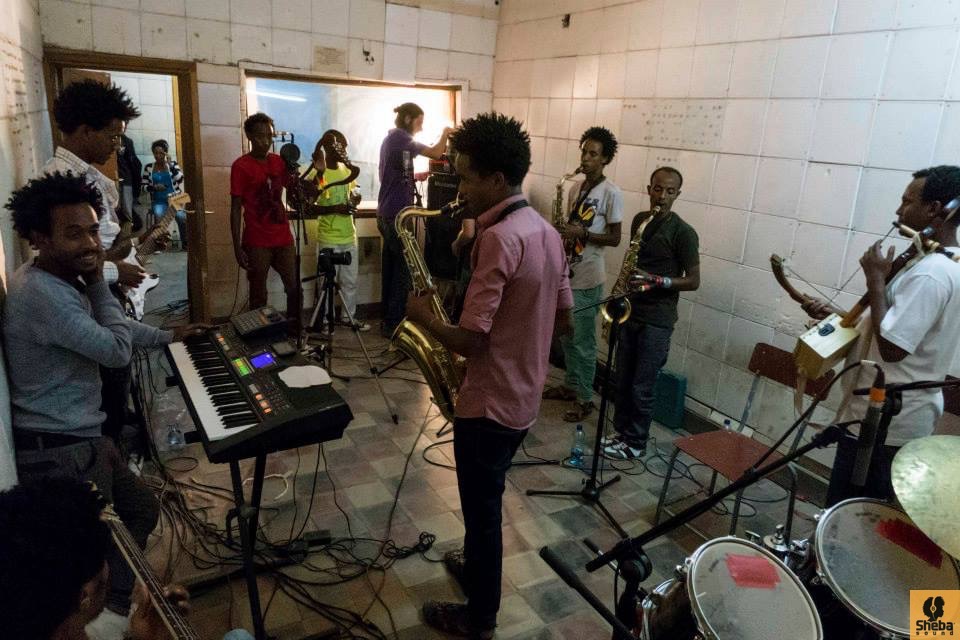 Given that there are 85 languages, and we had limited knowledge of which areas to plan trips to, limited finances and limited time, everything that we were doing felt like we were touching the tip of an iceberg. We would simply arrive in a village which was associated with a certain tribe we had or hadn’t heard of. We would introduce ourselves to the authorities (if there were any) and then start to assess if there were people around who were interested in and capable of expressing their tribe’s music.
Given that there are 85 languages, and we had limited knowledge of which areas to plan trips to, limited finances and limited time, everything that we were doing felt like we were touching the tip of an iceberg. We would simply arrive in a village which was associated with a certain tribe we had or hadn’t heard of. We would introduce ourselves to the authorities (if there were any) and then start to assess if there were people around who were interested in and capable of expressing their tribe’s music.
Dealing with the local authorities was always interesting, as they could make or break a recording session with the wave of a hand or a phone call. This is typically how a conversation would go at a local ‘kebele’ (council) office:
Sheba: Hi we’re here to record the music from the local tribe here. We have been doing this all over Ethiopia and it would be great if your tribe is also represented in this project.
Bureaucratic honcho: Do you have a press licence?
S: Why, yes of course.
BH: I see the area listed on the licence, but not this specific village, I will have to check with the local area manager.
S: Well as you can see, we only have the area listed on the licence, there are no villages mentioned here.
BH: That’s not the point, I will have to check.
(3 hours and 20 cups of coffee later…)
BH: Well that all sounds OK, so tell me what you plan to do.
S: Well, we have a few microphones and cameras, and we would like to record the musicians. We can pay the whole group some money, and they will have to sign a contract that I have here. We will give the recording back to the musicians for free (they can do whatever they want with it) and the government gets everything we do for archive.
BH: I will have to contact the lead musician, but he lives 20 km away and does not have a phone.
(Between 3 hours to 2 days later……….)
Anyway, you get the general idea.
 Then we met the musicians. Firstly, we had to explain to them that the notorious synthesizer (if it existed) was not going to be a focal point of the recording. Once we had agreed on the arrangement, then we would have to help find or collect the other musicians. At the same time, we would start looking for a space that was appropriate for the recording.
Then we met the musicians. Firstly, we had to explain to them that the notorious synthesizer (if it existed) was not going to be a focal point of the recording. Once we had agreed on the arrangement, then we would have to help find or collect the other musicians. At the same time, we would start looking for a space that was appropriate for the recording.
Traditional Ethiopian houses tend to be made of mud and wood, with straw roofs. These kinds of structures or an outdoors space were generally considered appropriate for the kind of acoustics we were looking for. They also happen to look good on camera (once well lit), which was a definite bonus point for the documentary.
Prior to setting up, we needed to make sure that all the musicians who arrived understood the terms of the recording session and were happy to engage. We wanted about eight traditional songs. We planned to pay them a set fee for the session. A representative would sign a contract (translated into Amharic) with us. They would get a CD of the recording at the end of the session, to do whatever they liked with.
Organising the set up of the mics for the recordings was always different. There were so many variations: from a single “washint” (flute) recording to full brass bands of 40 musicians. Our sound technician, Quino Pinero, did an amazing job assessing the different arrangements, space and equipment at our disposal, and always got the best possible audio. We had a generator, mic stands and extra cables. We pooled all of the different mics that we had. We also had a small guitar amp for the krar. At the same time, our camera crew was engaged in setting up the space with lights we had brought (often driven by our generator) in order to ensure that everything was beautifully captured for the big screen.
The musicians often seemed a little on edge prior to the recordings. Most had never been asked to play in a “studio” environment or had rarely played into a microphone. Others were wary of us because they did not know us. Some were not sure if they should be wearing their traditional clothes in front of the cameras as we told them it was their choice. The long periods of setting up lights, cameras and microphones and doing initial sound-checks often tried their patience.
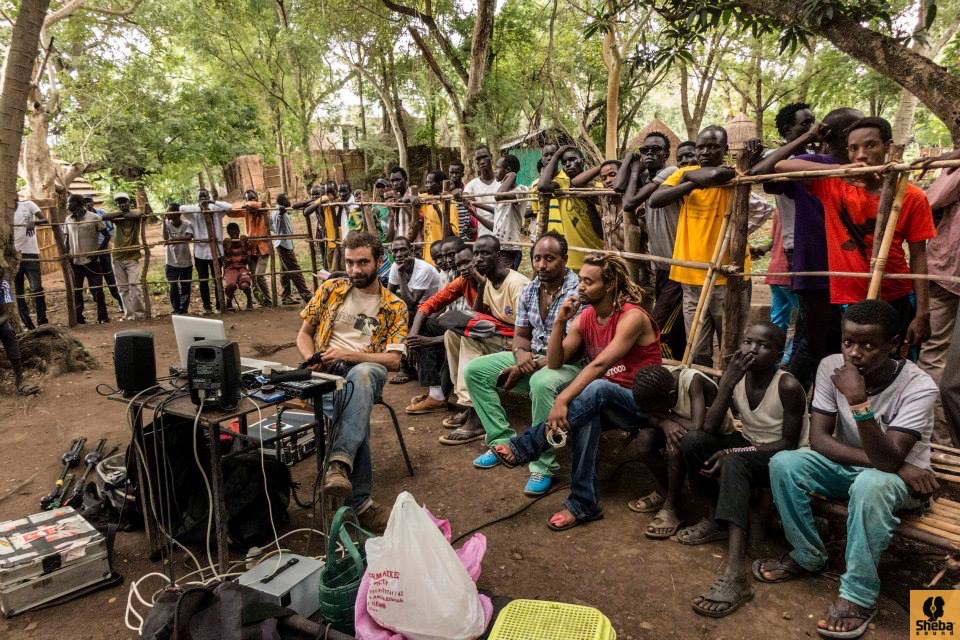 As we started to record, the first couple of songs could be a little shaky. The group needed to find its feet in a novel space, sometimes without their beloved synthesiser providing the beat and melody lines.
As we started to record, the first couple of songs could be a little shaky. The group needed to find its feet in a novel space, sometimes without their beloved synthesiser providing the beat and melody lines.
We tried to make the musicians feel as comfortable as possible. We would buy food, alcohol, chat, tea and coffee and encouraged them to relax into the music.
Many of the traditional songs that the groups performed are primarily for dancing, and will go on all day and night in the village or fields. There is no definitive end point. The beauty in much of this dance music is the development, nuances and build ups, as the repetitive rhythmical structures and melody lines intertwine with each other to create an overwhelming web.
We explained to the musicians that we were not looking for “pop” versions of their cultural songs. We wanted to record the songs as they would be sung in their natural environment. This meant that songs were sometimes up to 20 minutes long as opposed to three and a half minutes. Other times, the song was beginning to build nicely, and the band were just beginning to find their feet, when the leader suddenly decided to go for an abrupt ending.
We have now done some 35 recording sessions all over Ethiopia. Some of these recordings are from specific tribes, who are directly linked to the administrative “Bahal Aderash”. Others come from self-organised villagers or from professional gigging musicians.
We also attempted to gather information at each recording session. Our trusted translator and general fixer, Naomi, was in charge of writing down the roster of band members and names and meanings of songs. This was always a difficult task during the recording. We also tried to do an interview in Amharic with at least one person from each place after the recording.
Website
We have tried to gather as much information as possible around each of our recordings. In places, material is missing which will need to be added in the future.
The information currently provided on this website is just the starting point of an archive of Ethiopia’s diverse cultural music. We will continue to add more video and audio as we record and edit it. We also hope that others will help us if they have information or music to add or share.
We are also working with Ethiopian institutions to provide them with the archive we are gathering.
Documentary
A documentary of the recording sessions, in conjunction with Solysombra Recordings, will be released in mid-2015.
Forthcoming vinyl album and single releases
The first compilation album by Sheba Sound will be released in conjunction with Paradise Bangkok in mid-2015.
Production, re-edits, dubs and re-mixes
We are working with different producers in Addis and elsewhere to bring their own personal touch to some of these recordings. We have just finished building dubs of some original recordings at the world-renowned Roots Garden studios in London, run by Nick Manasseh.
Events and touring
Most bands listed on this site are available for touring both inside and outside Ethiopia. We plan to encourage bar owners in local towns and in Addis to invest in promoting little-known musicians.
If you hear a particular band that you would like to book for tours or festivals, please contact us. Otherwise, we can send you a portfolio of some of our favourites.
Jonathan Banes aka DJ Yonatan represents Sheba Sound as a DJ. You can check out some of his mixes here.
Ongoing recording
There is no end point to the recording process. We have recorded over 800 musicians to date, but we will never record all tribes and meet all great musicians. We do intend to carry on, build on what we have started, and encourage others to do the same.
We have tried our best to provide correct information on this site, but inevitably there will be gaps and inaccuracies. If you think we have got something wrong, have something to add about a song or tribe, or wish us to remove something from this site, please get in touch.





